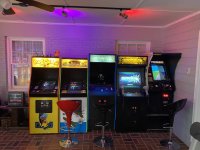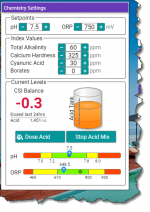Hey Ron
@MyAZPool , I’ve been really hoping that you might be the “tinkerer” who finds out something useful to do with ORP numbers and higher CYA levels (I am running CYA around 60 but might eventually go up near 80-90). Like you and others, I plan on adding a couple of the Atlas probes but the ONE I really want is simply an indicator that chlorine levels have dropped to catastrophic levels due to bad liquid chlorine or a leak in a Stenner tube.
You don’t have this same issue because of your SWG, but do you think that your ORP numbers (moving average over a day or something similar) could be used somehow in that fashion, even with high CYA?
Hi Jon..
So, as you know, my ORP values are not accurate as far as true ORP values go because of my higher CYA values. Check...
BUT, the rise and fall of the ORP values will indicate a rise and fall of FC levels.
To give you a baseline. Typically, my ORP values hover somewhere around 525-550 during the day and then of course at night, it's somewhat higher (around 600-625). Depending on environmental factors, bather load, etc., a SWCG output level of 25% usually results in an FC level of 4.5-5.0 based on all of my particular variables (pump run time, SWCG model, pool volume etc. etc. etc.)
Now for example, since we began having these changes in weather, I noticed my ORP values had fallen. The ORP value during the day was down to 475 and I had noticed via my ORP history graph, how over a couple of days it had been trending down.
That was my cue to check FC. Sure enough, FC was down to 3.0. At that point, I increased SWCG output from 25% to 35%. Once I did that, ORP began to rise over the next few days. It's now back to its normal low 500's during the day and low 600's at night. FC is back to 5.0
Anyway, that is kind of a rundown on how I use ORP as nothing more than a trend indicator since the actual ORP values are not accurate due to my higher CYA levels.
How about all this rain eh? We sure did need it!!
r.




